DEATH MACHINE. Cyberpunk horror movie from the creator of BLADE
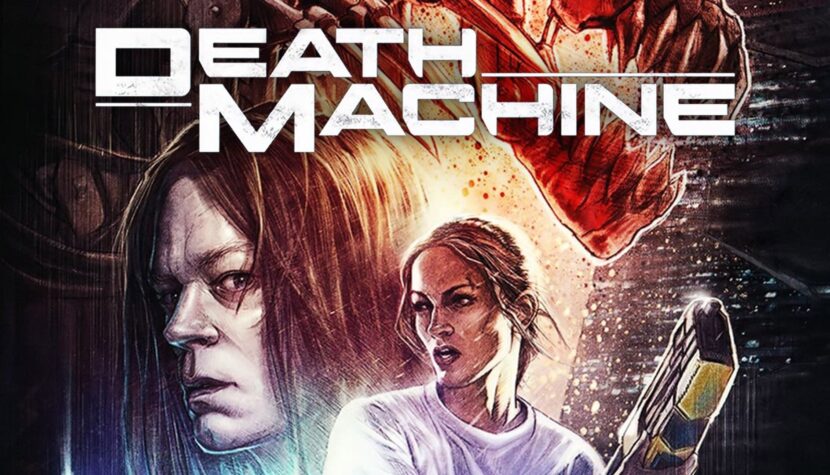
Death Machine, directed and written by Stephen Norrington, is an atmospheric blend of a horror film with trapped characters hunted by an indestructible beast, combined with a cyberpunk setting and sensibility. However, it’s challenging to call it a cult classic, except for those who grew up in the VHS era. The VHS cover promised the “latest Alien” and the titular mechanical monster did indeed resemble the famous Xenomorph, especially in the shape of its head and the large jaws. It’s no wonder that the film was popular at the time, and even today, if someone remembers it, they might think of it as one of the better “clones” of Ridley Scott’s masterpiece.
The action of Death Machine takes place in the near future, although it’s hard not to react with a smile considering the film was made almost 30 years ago, and our world is still far from Norrington’s vision. The powerful CHAANK corporation comes under fire when someone from the company leaks documents to the media suggesting the deaths of children as a result of experiments with new weapons. It turns out that the new CEO, Hayden Cale, who is just learning about many of the corporation’s controversial activities, is responsible for the leak. The main source of the problem is Jack Dante, a brilliant inventor but also a psychopath with the mentality of a spoiled teenager, who holds the entire board hostage. Soon, his new death machine, which reacts to the fear of its future victims, begins to eliminate those hostile to him.
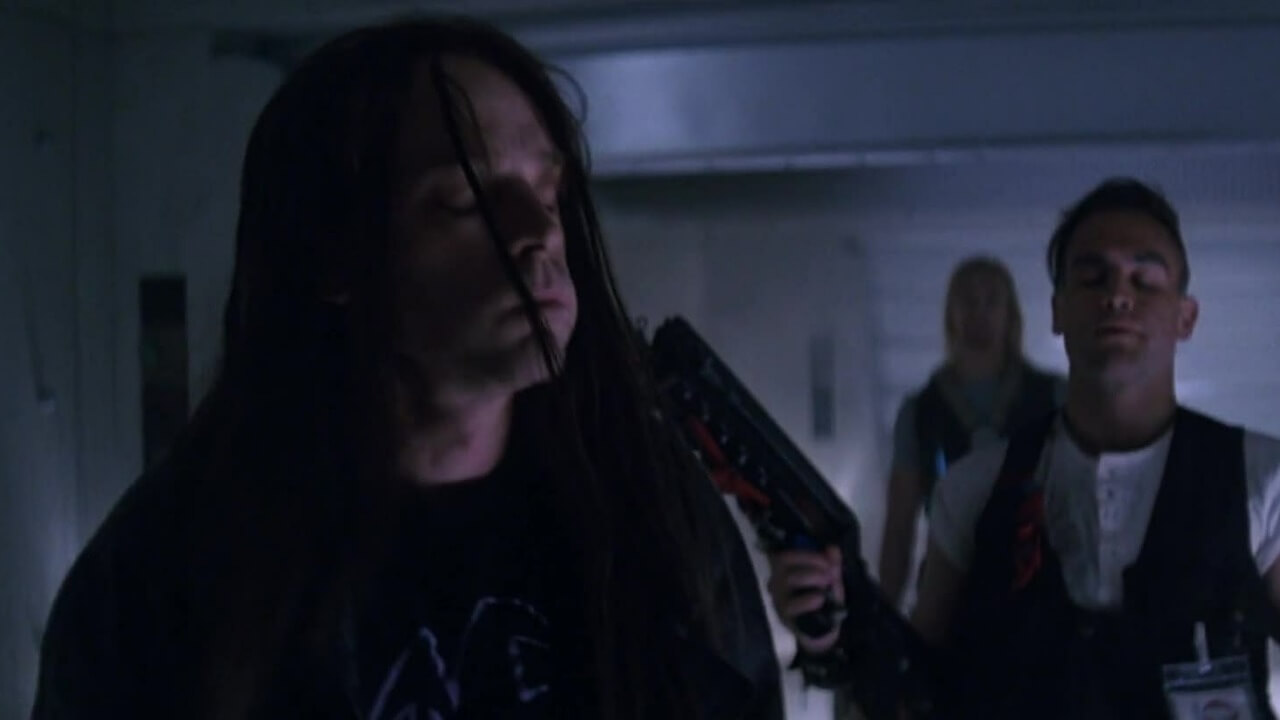
Excluding the first scene, which takes place during the day in a small roadside cafe where one of CHAANK’s super soldiers goes rogue, the rest of the film is almost entirely confined to the corporation’s skyscraper. While one location may suggest a limited budget (the film actually cost only $6.5 million), Norrington manages to create an excellently immersive world of the future, steeped in endless darkness – even in the office interiors, it seems that there is a lack of light – which, of course, draws parallels with Blade Runner. This is a reality saturated with technology, expressed not only through plot ideas (implanted transmitters in the hands of corporation employees, modern combat equipment) but also in execution. Especially, the use of superimposed brief frames of text or digital images in more dynamic scenes enhances our knowledge and underscores the aggression of the future world. At other times, they serve as a humorous punchline, such as when, after the death of one of the characters, we hear a funeral march in an 8-bit version.
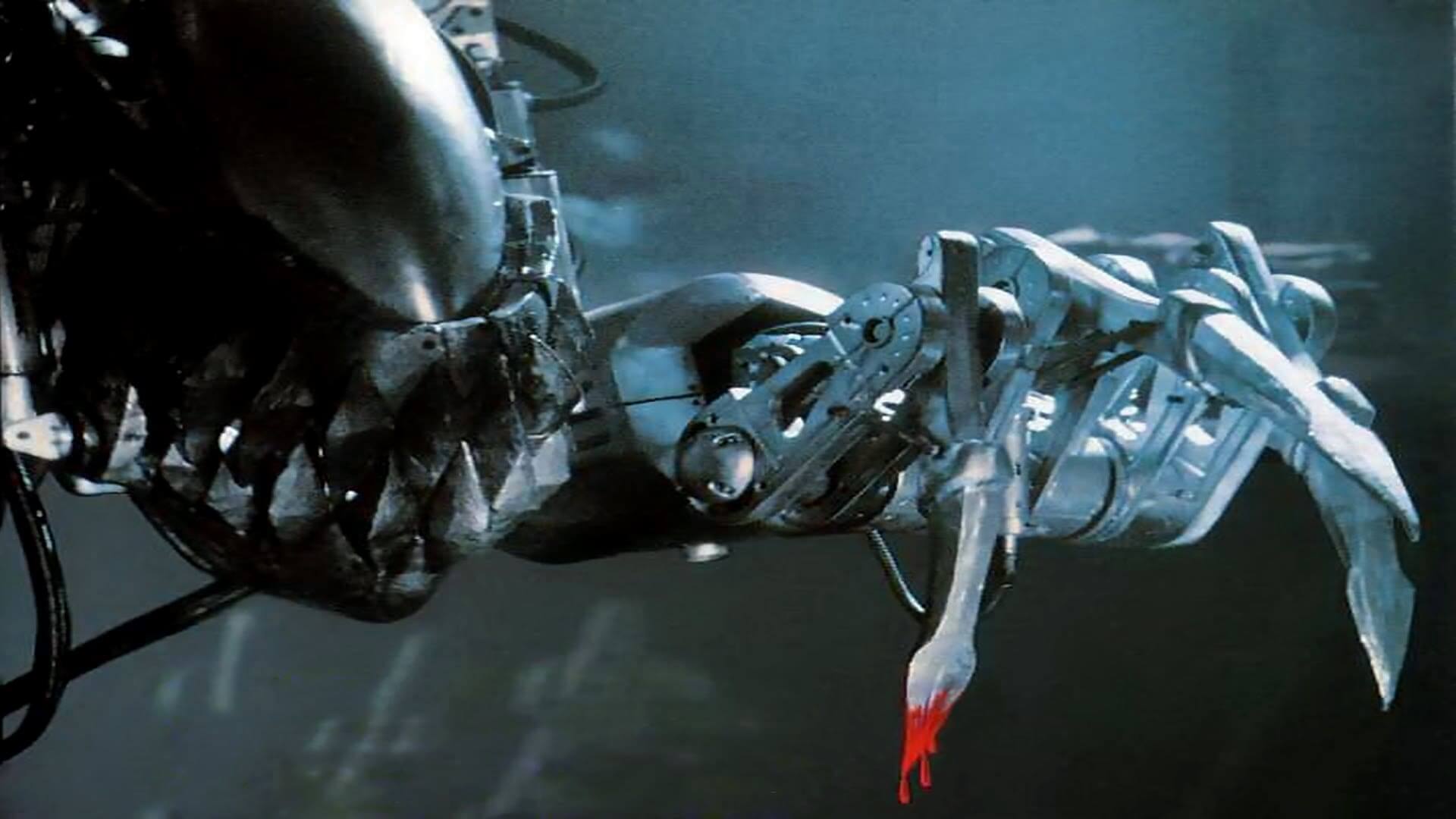
The humor in Death Machine, although it never turns into comedy, is one of its distinctive elements, and it provides clear signals of the story’s conventionality. Jack Dante may sound close to Joe Dante, but it’s nothing compared to Scott Ridley and John Carpenter, members of the CHAANK board, and Sam Raimi, Weyland, and Yutani, three anarchist thieves who break into the corporation’s headquarters. Genre film enthusiasts will immediately recognize the names of iconic directors and the name of the sinister company from the Alien series. Norrington doesn’t hide his inspirations, which also include RoboCop and Judge Dredd, the latter known only from comic books at the time. It seems that the British director has the right to engage in this postmodernist playfulness. Before becoming a director, he worked on special effects and makeup for films such as Aliens, Alien³, Hardware, Split Second, Witches, Gremlins 2: The New Batch, and Vital Signs. While watching his debut, you can feel his enthusiasm for science fiction and horror, his desire to pay homage to his idols, perhaps even to impress them, but also to push the boundaries of spectacular form. At the same time, it’s a cinema that is so aware of its inspirations, so deeply immersed in quotations, that fear and excitement often turn into amusement. After a while, it simply becomes exhausting.
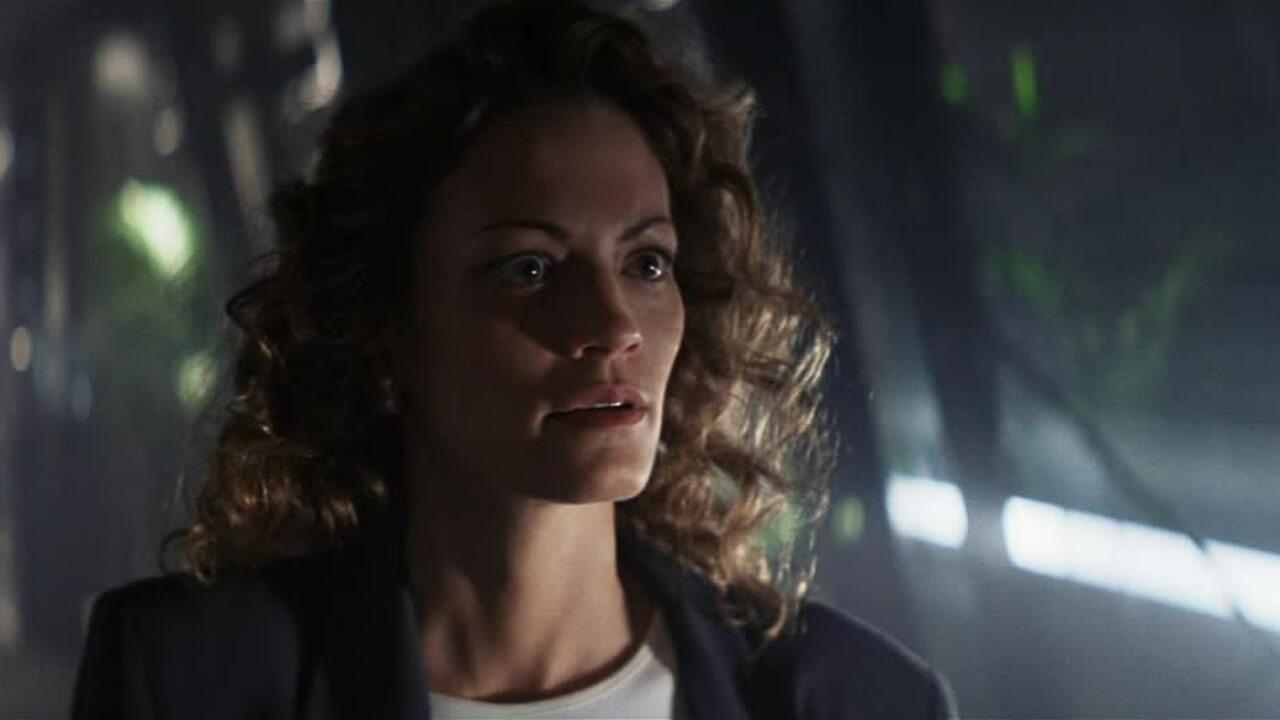
From the moment the anarchist thieves appear on the screen (which seems to be a nod to Die Hard because it turns out that these gentlemen are not thieves at all, and what’s more, one of them is played by… a thief-terrorist from that film), Death Machine starts tonally oscillating uncomfortably. So far, Dante was the only wild element in the plot, but after the caricatured trio enters the scene, even the main character stops behaving like the head of the corporation and starts cracking jokes. The humor spans from dark and absurd (after listing all of Dante’s crimes, the computer suggests… giving him a promotion) to slapstick (the characters get lost in the skyscraper at one point, and another time one of them turns around carelessly and hits his head on a beam, resulting in a fall with unfortunate consequences). Nevertheless, Norrington doesn’t give up on dark themes, such as using people for military experiments or the memory of the death of one’s own child. At the same time, we witness a macabre spectacle where the mechanical creature massacres everything and everyone with its steel claws and teeth. As a result, it’s difficult to take the fight between humans and the machine seriously, but it’s also impossible to treat it purely as pastiche.
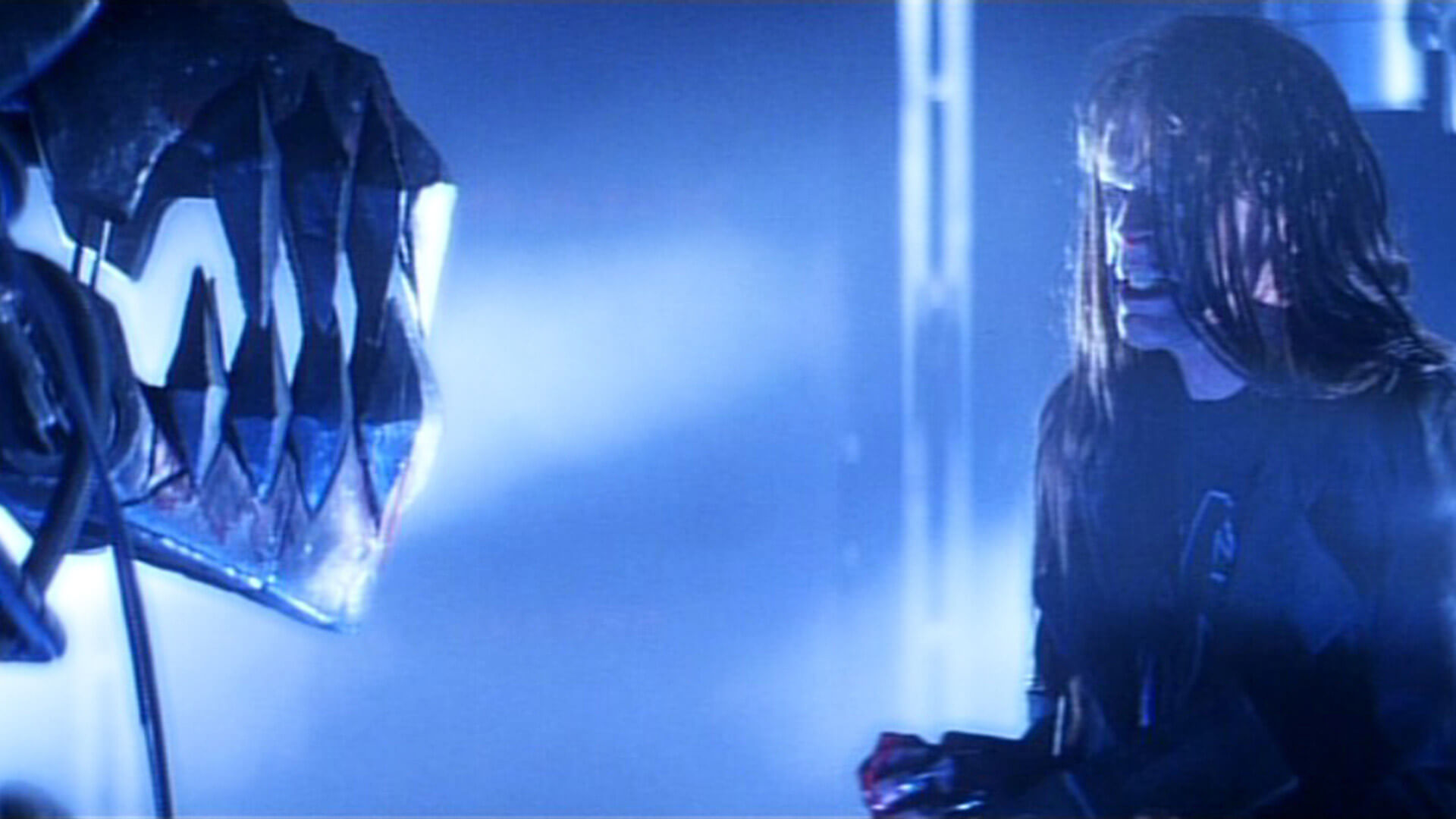
Norrington falls short in terms of tonal consistency, but he more than compensates with spectacle. The attacks by the titular machine are fast, destructive, and above all, irresistible. The several-meter-tall metallic monstrosity has been designed to inspire fear, and although it initially seems as large and clumsy as ED-209 from RoboCop, it matches Terminator in terms of invincibility and determination. Unfortunately, Death Machine lacks shots that would show this beast in all its glory, possibly due to budgetary constraints (they probably ran out of money for the super-soldier suits, another invention of the corporation, which look lightweight and plasticky). However, we can clearly see what it sees – a blue grid with red targets, a view straight out of a computer game, complete with scoring. It reflects Dante’s madness and immaturity. The role is played by the reliable Brad Dourif, who may have been too old for the part at the time (he was 44 years old), but he fits into it perfectly. He’s the best in the entire cast, which includes Ely Pouget (just two years later, she starred in another cyberpunk horror, The Dark Side of the Moon), William Hootkins (better known for his role as corrupt Eckhardt in Tim Burton’s Batman and as the creepy neighbor in Hardware), John Sharian (who terrorized Christian Bale in The Machinist), and debutant Richard Brake, who is mostly associated with Rob Zombie’s films these days. It was also the first feature film in the career of a very young Rachel Weisz – she appears in Norrington’s film for just a moment, but still leaves an impression.
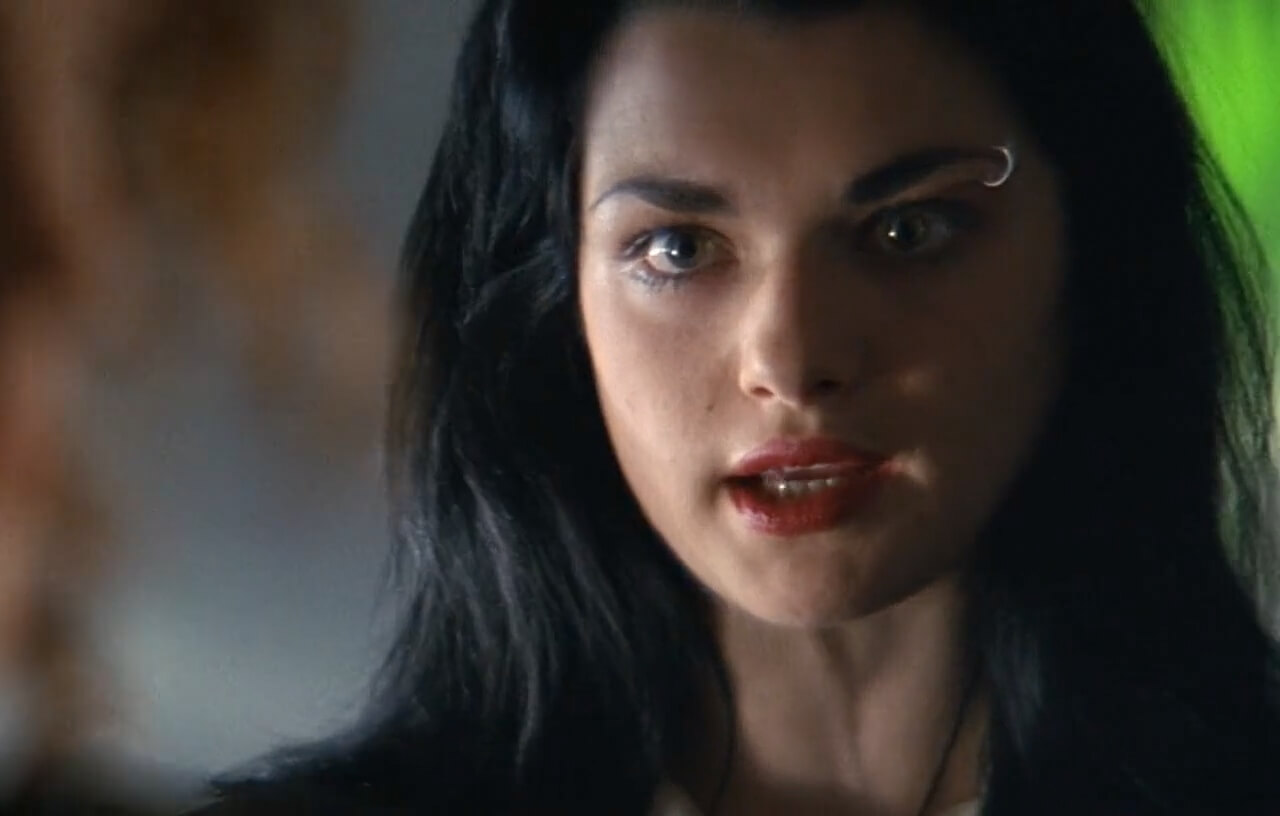
In the 1990s, several British films combined horror with science fiction, often with a cyberpunk flavor. The most famous is Hardware by Richard Stanley, based on a comic strip from the cult magazine 2000 AD. It had a punk, anarchistic mentality, a strong visual style, and depicted an unpleasant future where technology, instead of helping, harms humanity. Hardware’s status as a cult film is unquestionable, which cannot be said of Death Machine, even though both films are thematically and stylistically similar. Perhaps the problem lies in the overexploitation of cinematic traditions of horror and science fiction, as well as the tonal oscillation, although Stanley’s debut is not without its flaws either. However, its futurism hasn’t aged as quickly as Norrington’s – what used to define its attractiveness in the context of science fiction now directly refers to the decade in which Death Machine was made. A remotely piloted mechanical monster, video cassette recordings, and above all, the computer graphics of that time – this “near future” will amuse today’s audience.
I may not necessarily agree. I grew up with Death Machine, and I rented the cassette repeatedly throughout the late ’90s. Norrington’s direction is a great preview of what he would accomplish four years later in Blade. Today, I can’t help but notice the flaws in his debut (although even back then, a two-hour runtime seemed excessive to me), but I appreciate the audiovisual presentation much more, thanks to cinematographer John de Borman and composer Crispin Merrell. Norrington’s vision of the future may be outdated, and what entertained us 30 years ago may be more annoying today, but the next time I want to watch a quintessential VHS classic about a killer robot, I already know which disc I’ll put in the drive.

